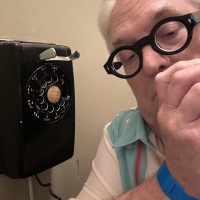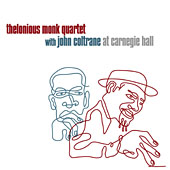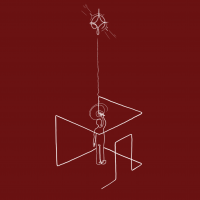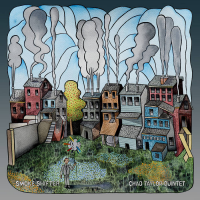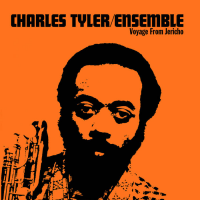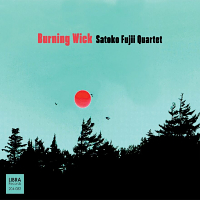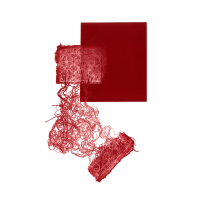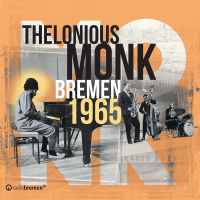Home » Jazz Articles » Bailey's Bundles » Two 20-Bit Fantasies - Thelonious Monk: Alone in San Fra...
Two 20-Bit Fantasies - Thelonious Monk: Alone in San Francisco & Art Pepper: Winter Moon
 Thelonious Monk
Thelonious Monk
Alone in San Francisco
Fantasy Records
2005
Thelonious Monk and Horace Silver have in common the fact that neither could really be considered fluid pianists in the vein of Bud Powell or Art Tatum, throwing off one phrase after another without breaking a sweat. Both play piano with an almost hyper-thoughtful hesitancy that results in explosions of notes and wildly jagged phrasing. The result is piano playing that sounds a bit off kilter, certainly in the case of Thelonious Monk.
In the case of Monk, solo recitals best illustrate this off kilter-ness. Alone in San Francisco was Monk's followup sequel to his well-received 1957 Thelonious Himself (Riverside, 2004; recorded April, 1957). Alone San Francisco contains the quirky combination of standard and original compositions, from the immediately identifiable to the completely unknown that jazz fans would have expected from Monk. For example, the opener, Blue Monk is one of the older Monk compositions recorded by the pianist many times. On the flipside "There's Danger in Your Eyes, Cherie is an odd artifact that, according to The All Music Guide, was not recorded by Monk before or since Alone in San Francisco.
Thelonious Monk's piano style might be best described as "fractured stride. There is some measure of irony in Monk being called the "High Priest of Be Bop, when "Be Bop was not exactly what he played. When Monk played, he played "Monk Music, never mind that he may not have composed the piece. Anything he played was necessarily his. Many contemporaries of mine, engaged jazz listeners all, claim they never understood Monk's music (or they claimed Monk was playing all the wrong notes), giving Monk's composition "Ugly Beauty some ironic credence. I think that new ears to Monk and his musical corpus must understand that Monk was not so much playing differently as forcing listeners to listen differently. In this way he certainly may be considered the "High Priest of Be Bop along with his cherubim and seraphim, Charlie Parker and Dizzy Gillespie.
Alone in San Francisco begins with Monk's fundamental blues, "Blue Monk, full of proud New York Stride with a strolling, if not skipping bass line. Monk's time is perfect and is maintained in the left hand which occasionally, and always at the right time, hitting the root notes propelling the piece. "Ruby, My Dear like "Blue Monk exists as a Monk standard often covered by contemporary pianists. Here, Monk approaches the piece as if getting used to it. Mock hesitance at first then full bore stride confidence in the solo, which rolls out fully conceived. "Bluehawk picks up where "Blue Monk left off, fracturing the stride and twelve bars further, allowing Monk the rhythmic and harmonic freedom to further is unique vision.
Out of nowhere comes the 1920s fluff "There's Danger in Your Eyes, Cherie," guaranteeing the surprise Monk seemed to always have when sitting to record, offered here in master and alternate takes. Besides the aforementioned Thelonious Monk Himself, I would suggest the superb 1998 Columbia collection, Monk Alone: The Complete Columbia Solo Recordings: 1926 - 1968.
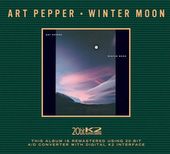 Art Pepper
Art Pepper
Winter Moon
Fantasy Records
2005
Alto Saxophonist Art Pepper had an ambitious desire when starting his comeback in the late 1970s following a two decades of heroin, prisons, and rehab. That was to be the greatest alto saxophonist ever. A relative challenge when one considers that Mr. Pepper boasted contemporaries like Charlie Parker, Johnny Hodges, Paul Desmond, and Julian "Cannonball Adderley. Where Mr. Pepper departs this company is in the fact that he outlived them all to forge a sound so staggeringly different from his 1950s recordings (and more importanlty, Charlie Parker) that by the time of his death in 1982, he had achieved desire, being inducted into the Down Beat Hall of Fame that same year.
Another desire the saxophonist was to make a recording with strings. Many of Pepper's contemporaries had the same desire producing mixed results. Several are cited in Roger Crane's very fine Building a Jazz Library Jazz With Strings collection. Crane opines of one recording that "...If you must restrict yourself to only one "jazz-with-strings" recording, this should be the one. This recording is Art Pepper's Winter Moon.
By September of 1980, Art Pepper was in the midst of a full-fledged renaissance that began with his triumph of the East Coast in 1977 as captured on Art Pepper - The Complete Village Vanguard Sessions and lasted until his death. He had most recently been in the studio with Sonny Stitt in late July, sparing with the great altoist, before entering the Fantasy Studios in Berkeley to record with a crack rhythm section headed by Stanley Cowell and string section under the batons and with the arrangements of Jimmy Bond and Bill Holman. Over two days, Pepper demonstrated his superiority as a balladeer with perfect material that included Pepper's own poignant "Your Song in both master and alternate, and a whole truckload of Harold Arlen (perhaps Pepper's favorite composer) with "When the Sun Comes Out, "Blues in the Night (with clarinet), and Hoagie Carmichael's ravishing Winter Moon. Pepper dispatched all with a corrosive grace that had become his muse in his last years.
However, it was the love song from a 1978 mystery/thriller that is the tonal and sonic center of the set. "The Prisoner from the Faye Dunaway/Tommy Lee Jones film The Eyes of Laura Mars provided Pepper is vehicle to express both his beautiful ballad tone and passionate cry for absolution. Nominally divided in two, the introduction Pepper plays straight before entering the song's extended coda where he solos in brief two-note motifs, building toward his consecration at the alter Ayler and Coltrane, spitting out flurries of notes telling the listener, this is all I've got, deal with it. Inspiration captured magnetically, rendered digitally forever.
Tracks and Personnel
Thelonious Monk - Alone in San Francisco
Tracks: Blue Monk; Ruby, My Dear; Round Lights, Everything Happens to Me, You Took the Words Right Out of My Heart, Bluehawk, Pannonica, Remember; There's Danger in Your Eyes, Cherie (take 2); Reflections, plus CD bonus track There's Danger In Your Eyes, Cherie (take 1). Recorded at Fugazi Hall, San Francisco, CA, October 21-22, 1959.
Personnel: Thelonious Monk: piano.
Art Pepper - Winter Moon
Tracks: Our Song; Here's That Rainy Day; That's Love; Winter Moon; When the Sun Comes Out; Blues in the Night; The Prisoner (Love Theme from "The Eyes of Laura Mars"); plus CD bonus tracks Our Song (alternate); The Prisoner (Love Theme from "The Eyes of Laura Mars") (alternate); Ol' Man River.
Personnel: Art Pepper: alto saxophone; Stanley Cowell: piano; Howard Roberts: guitar; Cecil McBee: bass; Carl Burnett: drums.
Tags
PREVIOUS / NEXT
Support All About Jazz
 All About Jazz has been a pillar of jazz since 1995, championing it as an art form and, more importantly, supporting the musicians who make it. Our enduring commitment has made "AAJ" one of the most culturally important websites of its kind, read by hundreds of thousands of fans, musicians and industry figures every month.
All About Jazz has been a pillar of jazz since 1995, championing it as an art form and, more importantly, supporting the musicians who make it. Our enduring commitment has made "AAJ" one of the most culturally important websites of its kind, read by hundreds of thousands of fans, musicians and industry figures every month.

